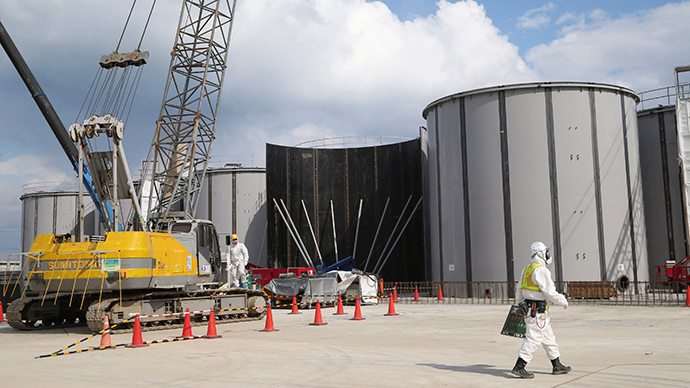New drone to autonomously inspect crippled Fukushima reactors

A Japanese company is developing a drone able to fly inside the reactor buildings of the crippled Fukushima nuclear power plant. The device has lasers to avoid obstacles and will be able to recharge its batteries without an operator.
A meter-wide six-propeller drone has been developed by Autonomous Control Systems Laboratory Ltd, which manufactures various types of robotic systems, Jiji Press reports. When ready, the aircraft will start inspecting the buildings of crippled reactors 1 and 3 at the Fukushima Daiichi Nuclear Power Plant.
The hexacopter has a camera, a dust collector and devices to measure radiation levels. It’s also equipped with lasers to spot and avoid walls and other obstacles, even when inside a building.
“I think the drone will be useful as it can be sent to measure radiation levels and contribute to giving the highest priority to human safety,” Kenzo Nonami , a professor at Chiba University and CEO of Autonomous Control Systems Laboratory told Jiji Press.
READ MORE: Radioactive Fukushima food could be hitting UK shops through safety loopholes
The scientists will receive three-dimensional data from the drone in real time. The unmanned device will also be able to replace its batteries without an operator. This practice will help the drone to prolong its mission in a damaged reactor.
READ MORE: Radioactive drone found on Japan PM’s office roof
“Once the work shifts to the stage of removing melted nuclear fuel from damaged reactors, radiation doses are expected to rise in the work areas,” Nonami added.
The device has already completed a test flight in Reactor 5 at the plant where it carried out an inspection from the first floor to the fifth. The reactor was shut down following the 2011 nuclear catastrophe. The aircraft was able to shoot videos and measure radiation levels in the facility.
The developers, however, can’t say when exactly the drone will inspect the crippled reactors.
READ MORE: Pumps at Fukushima plant halted, toxic water leaking into ocean – TEPCO
“The time will certainly come when drone technology will be of help,” a member of the development team said.
In May, it was revealed that TEPCO, the Fukushima plant operator, used at least 16 robots to explore the plant, from military models to radiation-resistant multi-segmented snake-like devices that can fit through a small pipe.
However, even the toughest models face problems measuring deadly radiation levels: the latest robot sent into Reactor-1 broke down three hours into its planned 10-hour foray.
READ MORE: Fukushima pressure relief system failed at Reactor-2 after disaster, TEPCO reveals
TEPCO is now on a mission to clean up the consequences of the March 2011 disaster, when a 9.0 earthquake damaged the plant, causing several explosions, meltdowns and contamination of the surrounding area.












